Keeping Warm in Winter the Japanese Way
Posted by Yukiko Kisaki on 18th Jan 2023

I live in a traditional Japanese wooden house in Miyazaki with modest insulation. It doesn’t snow much here, though winters are relatively cold, and nighttime temperatures can dip below freezing.
For me, staying comfortable in winter isn’t as trivial as setting a central heating thermostat, which my house doesn’t have. But I manage just fine without it.
Over the centuries, the Japanese have learned how to stay warm and comfortable in winter using minimal energy and resources. I try to put the old wisdom to use, which also helps keep my heating bill low. Below is a short list.
Winter socks and slippers
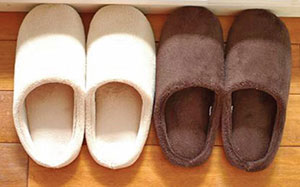
Japanese winter slippers and a few pairs of warm socks are among my top winter must-haves because one foolproof way to keep feet warm is with a pair of comfy-cozy winter socks and slippers.
I also keep a few pairs of slippers in my genkan (front entrance) for my guests.
Kotatsu table
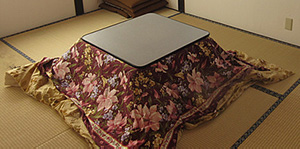
Kotatsu is a low wooden table with a removable table top. You can sandwich a big quilt between the tabletop and the frame. Almost every home in Japan has one.
My kotatsu is typical with a built-in electric heater under the top frame. It has low, medium, and high settings for frigid nights. On most nights, I’m okay without using the heater.
It’s great for having a meal with legs tucked cozily underneath, using my laptop, watching TV, or even taking a nap.
Yutanpo hot water bottle
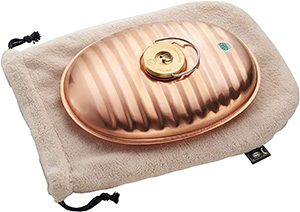
For hundreds of years, the Japanese have enjoyed getting warm and comfy in bed on cold winter nights with a simple warming device called a yutanpo. And they are still popular! Even Amazon has a large selection with hundreds of great reviews.
To use the yutanpo, add hot water (below 80°C or 176°F), close the lid, slide it into its cover and close the drawstring string on the bag. And if you have pets, you will be delighted to see them cozy up to it too.
Winter foods
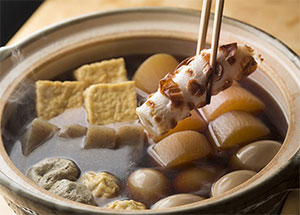
Seasonal foods are something that I, like most Japanese, look forward to. The quintessential Japanese winter dish is “oden”— a simple pot dish stewed in a light, soy-flavored dashi broth. My favorite oden ingredients are daikons, fishcakes, boiled eggs, atsu-age (deep-fried tofu), and konnyaku (konjac).
A hot cup of very low-caffeine green tea (like hojicha or genmaicha) is a wonderful winter nightcap. So is a cup of kuzu hot drink (kuzu-yu), which I sweeten with honey and add things like cinnamon powder, freshly grated ginger or matcha powder.
Hot bath in the evening

To take a Japanese-style bath and keep yourself comfortable all night, you only need a place to wash your body and a warm, clear tub of water.
For the Japanese, bathtubs are for soaking and relaxing and are always kept clean. Washing and scrubbing belong outside the tub.
You fill up your bathtub to about two-thirds full before taking a shower and step right into your tub after washing and scrubbing.
You do not need to spend a lot of time in the bathtub. Even five minutes will do! Pat dry with a soft towel and drink a cup of water to rehydrate yourself.
Engawa "sunroom"
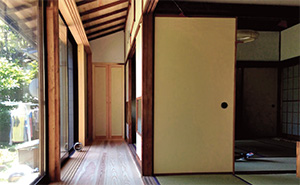
Engawa is the Japanese version of a veranda/porch resembling a sunroom.
It is a wide hardwood strip along the house's edge with sliding windows/doors. It faces south to let in the most winter sunlight.
In winter, windows along the engawa catch the low winter sun and transfer its heat into the adjacent rooms.
In summer, engawa serves as a porch-like veranda. You slide the doors open to let the breeze into the room or sit outside along its edge.
Not surprisingly, the adjacent rooms are the warmest in my house during winter and the coolest in summer.
Engawa is arguably one of the essential elements of traditional Japanese architecture. Japanese movies often include scenes showing the actors sitting on an engawa with open windows, talking, or sipping tea while looking out into the garden.
The old and the new
It is easier to dial a thermostat and heat rooms up. But I would not trade my old winter comforts for a new central heating system.
The age-old routines do more than keep me warm for a much smaller utility bill. Each offers simple pleasures, while together, they create a way of life and memories that stay long after winter.

